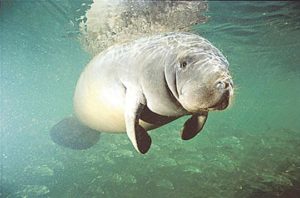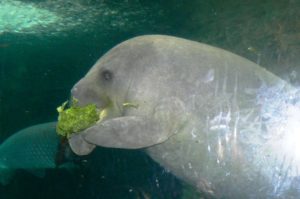Costa Rica’s New National Wildlife Symbol – the Manatee
Move over sloths, Costa Rica has recently adopted a new national wildlife symbol – the West Indian manatee! These adorable marine mammals were officially named the country’s national wildlife symbol in a move that will hopefully boost local conservation measures. Manatee numbers have been dwindling in their primary habitat – the brackish canals found in Costa Rica’s northern Caribbean region.
Click here and make your visit to Costa Rica special by booking a stay at our amazing villas!
Sea cows are Costa Rica’s new animal mascot

West Indian manatees, also called sea cows, are placid herbivores that range from the mid-Atlantic to southern Florida and south to Brazil. According to a press release issued by the Costa Rican Tourism Board, a group of students from Limoncito school suggested manatees be made the national symbol, given their precarious status in the river inlets and lagoons of Barra de Colorado and Tortuguero National Park – the only areas where manatee populations have been noted. Last month, Costa Rican President Luis Guillermo Solis signed the bill into law, which will also earmark funds for future manatee preservation and educational outreach efforts.
Tortuguero manatee populations
Estimates on current Costa Rica manatee numbers seem to vary, though scientists speculate some 20 to 100 manatees presently live and breed in the northern Caribbean waters. Tortuguero is more famous for its nesting sea turtles, though some lucky tourists have had the rare opportunity to interact with these gentle mammals while kayaking or wildlife watching on a canal tour. A torrent of bubbles is usually the best clue as to the sea cow’s whereabouts, which is generally in shallow, salty waters where the animals feed on marine plants.
Habitat and characteristics of Costa Rican manatees

Weighing nearly a ton, manatees can grow more than nine feet in length and have flatter, shorter snouts than their distant cousin, the dugong. These barrel-shaped mammals are a brownish-grey color, and have course, wrinkled skin that is often tinged with algae. They are true herbivores and only dine on sea grasses and salt water vegetation, swimming up for a breath every 15 to 20 minutes. While grazing for food, they use their agile flippers to shuffle along the floor and scoop plants and roots into their mouths. Known for their incredible appetites, manatees can eat up to 100 pounds of vegetation daily, and prefer the warm temperatures of northern Limon’s lagoons, estuaries, canals and shallow coastal waters.
Conservation efforts to protect the manatee
Hunting manatees has long been illegal in Costa Rica, but humans continue to threaten its survival with agro-chemical pollution and encroachments on prime habitat. Now, thanks to the new law, sections of Tortuguero National Park will be completely protected, barring motorized boats and other human presence. However, many believe the real value in this new national symbol is the awareness and manatee education it will foster among children and adults alike, who know little about the plight of this peaceful endangered animal.

 +1 888-818-2097
+1 888-818-2097
 +506 8932-4731
+506 8932-4731